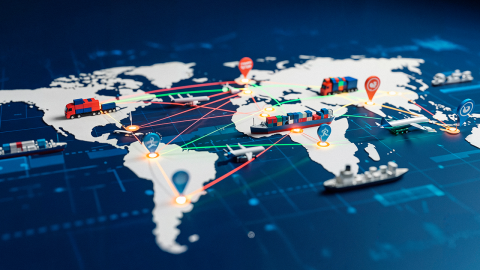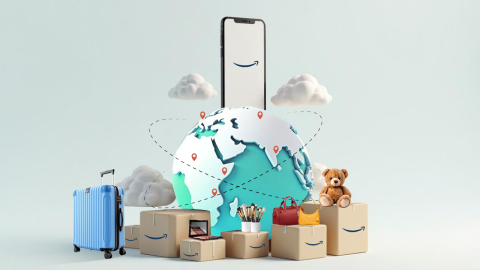The recent Black Friday Cyber Monday kicks off the holiday season which is an important time of the year for Indian exporters. Coming right after the peak season in India, this period offers these exporters cater to the growing demand of Made in India products across the world. We caught up recently with Abhijit Kamra, Director Global Trade, Amazon India to get some insights on the holiday season and also understand more about the growing significance of ecommerce led exports.
There’s a lot talk about Indian D2C brands making a mark in global markets. How do you think e-commerce is changing the nature of exports in the country?
Exports in India have largely been run as Business to Business (B2B) operations for decades, where Indian companies work as contract manufacturers for other brands. The scale of operations associated with B2B exports meant that small and medium businesses (SMBs) were not able to participate in exports. They encountered barriers like initial upfront investments, understanding global markets, and unpredictable demand patterns. Other issues included complexities associated with global supply chains and long payment cycles.
Growing internet penetration in India – coupled with technology adoption by SMBs – is enabling Amazon to widen the addressable customer base through e-commerce. It also provides Indian exporters with an ‘easy to adopt and scale’ mechanism and helps them grow outside India without needing a local footprint. In effect, e-commerce is reducing dependence on intermediaries by bringing the seller closer to the customer.
This presents a compelling opportunity for Indian SMBs to create global brands via e-commerce. For the first time in history, an SMB can interact directly with global customers and own and run its IP while being based in India. A recent NASSCOM study forecasts US$125 billion worth of Indian exports being driven by e-commerce by 2030; this indicates the huge opportunity available to SMBs to build and grow exports businesses via e-commerce.
Why are Indian SMBs considering e-commerce led exports to access global markets?
With increased internet penetration across India, e-commerce is being adopted rapidly for exports and there are a couple of reasons why. Global market access has traditionally been a huge challenge for Indian SMBs, and expenses associated with increasing access have been entry barriers. By bringing the Indian seller closer to global customers, e-commerce is increasingly blurring the lines between local and global. Today, any SMB exporter dreaming of building a global brand can access international customers from day one.
Then there is the support offered in logistics and supply chain management. If you think about it, cross-border logistics can be deeply overwhelming for SMBs. To conduct global operations, they’re required to book warehouse space in various countries, or sometimes book entire shipping containers for transporting products. Amazon Global Selling helps make this simpler and more flexible. Today, if a small business owner wants to store even a single product for sale in the USA, they are able to use an Amazon warehouse to store that product and pay for storage for as little as one day.
The final challenge is that of cross-border remittances. Traditional export payment cycles are long and range from 90-120 days. The Amazon Global Selling program has been designed in such a way that an Indian SMB can now receive payments in their Indian bank account in 7-14 days. This simplifies payments, cuts down time taken, and provides cash flow that can be invested back into the business.
How is Amazon leveraging Artificial Intelligence and Machine Learning (AI &ML) to drive e-commerce exports from India?
Technology and e-commerce enable a lot of data and insights. This can be leveraged by Indian exporters to get a lot of information on the latest styles, pricing, and other factors to cater smartly to the needs of global customers. For example, we use AI and ML to offer sellers support with understanding market trends and demand patterns across global markets. This helps them in experimenting in new markets without a lot of initial investment or effort, it also helps more tenured sellers in planning their inventories, acting quickly on customer feedback and update their products and offerings.
We are also using the right kind of technologies to create tools and services to help the sellers succeed in selling internationally from India. For instance, we have simplified the process of managing listings for different global markets. Our Build International Listings (BIL) solution today helps sellers list their products across all marketplaces by adding offers and synchronizing prices. It also translates the content in international languages such as German, Japanese. French, etc. making the process easier for the seller and also removes the language barrier.
What are global markets liking about 'Made in India’ products and how has demand evolved during the holiday season?
There is huge demand for ‘Made in India’ products across various markets, and this is not limited to the Indian diaspora living abroad. We’ve witnessed demand across categories like toys, textiles, leather goods, home and kitchen products, health and personal care, apparel, and jewellery.
We’ve also seen some interesting alternate use cases. For example, ghee being used as creamers for bullet coffee by Italian customers, Ayurvedic soap bars used instead of shaving cream as they are gentler on the skin, and more. These types of use cases have given rise to a whole new demand for products from Indian exporters.
Currently, we have over 70,000 exporters across India offering millions of products to customers around the world via Amazon Global Selling. These businesses have benefitted from a year-round spike in sales driven by e-commerce across global markets.
Let me illustrate with an example: In India, SMBs usually see a spike in sales during Diwali, while businesses selling in North America see a sale spike around occasions like Thanksgiving, Black Friday, Cyber Monday, Christmas, and New Year. A business that sells in both markets is now able to enjoy multiple sales spikes throughout the year, hedging business cyclicity for continued growth. If for any reason an Indian business owner did not have a good sale during Diwali in India, they can still capitalize on Q4 peak in Canada, the USA, or Europe and make up for it.
Black Friday and Cyber Monday have always been big in North America. How relevant is it for Indian sellers on the Global Selling program?
Over the past few years, we’ve seen Indian exporters benefit from the year-round demand spikes that e-commerce exports can create as different markets have high growth periods. Black Friday and Cyber Monday (BFCM) mark the beginning of the global holiday season, which brings higher consumer demand for products from Indian exporters through Thanksgiving, Christmas and New Year.
Seller success in previous iterations of the sale has energised the resolve of over 70,000 exporters that are currently part of Amazon Global Selling. Over 52000 new products were launched for the 2021 BFCM sale which happened between Nov 25 and Nov 29. Indian sellers witnessed a nearly 2X surge in demand across North America, EU and Middle East North Africa with nearly 500 sellers on the program achieving sales of USD 100K.
How do you see exports evolving from here? What role will Amazon play in driving exports from India?
As an ecosystem, we need to re-envision exports and work towards devising an Exports 2.0 model. This model will be driven by the power of the internet, increased technology adoption by SMBs, and the use of Artificial Intelligence (AI) and Machine Learning (ML). Exports 2.0 can be a springboard for lakhs of SMBs across India by providing them with market access, integration with global supply chains, and enabling them to create a strong global brand.
If I were to draw a parallel for Exports 2.0, we can see what automation and robotics have done for manufacturing – ushering in the fourth industrial revolution. Effecting a similar change for exports requires a conducive ecosystem that allows us to handhold MSMEs and enable growth through e-commerce, bringing more of them under the fold of cross border trade.
The Indian Prime Minister recently spoke about the importance of boosting exports from the country and its significance in reviving India’s economy in the post-pandemic world. He said Indian exporters should take advantage of new opportunities created global supply chain changes and work towards raising our merchandise exports to $400 billion in this fiscal year.
At Amazon, we are driven by our pledge to enable over US$10 billion worth of exports from India by 2025. I’m happy to share that we’ve already enabled $3 billion from cumulative exports and are on track to fulfil the commitments we’ve made.












